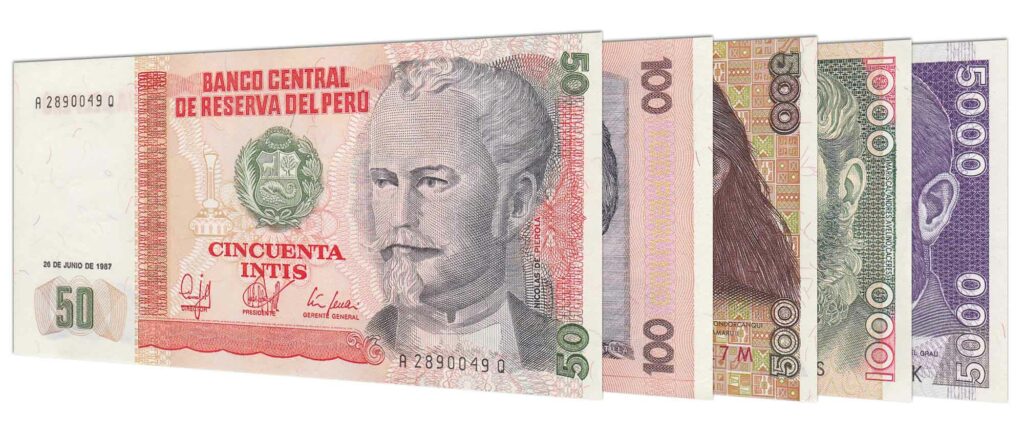Peru’s national currency is the Sol, already since 1863. But between 1985 and 1991, Peru’s currency was the Inti. Find out more about the value of Peruvian Intis and discover why banknotes from this short-lived currency are being found in drawers and forgotten envelopes around the world.
What are Peruvian Intis?
Peruvian Intis were the currency of Peru between 1985 and 1991. The Inti was named after the Incan sun god and was introduced in 1985, replacing the Sol (sun) at a rate of 1000 soles to 1 inti.The Sol had lost a lot of value because of high inflation in Peru. By dropping three zeroes and renaming the national currency, the Peruvian government hoped to normalise the monetary situation.
In 1985, the Banco Central de Reserva del Perú introduced banknotes in denominations of 10, 50, 100 and 500 intis. Peruvian coins in 1985 were 0.01, 0.05, 0.10, 0.20, 0.50, 1 and 5 intis. Peru’s new government led by Alan García saw good results at first, but it wasn’t long until inflation would come back with a vengeance.
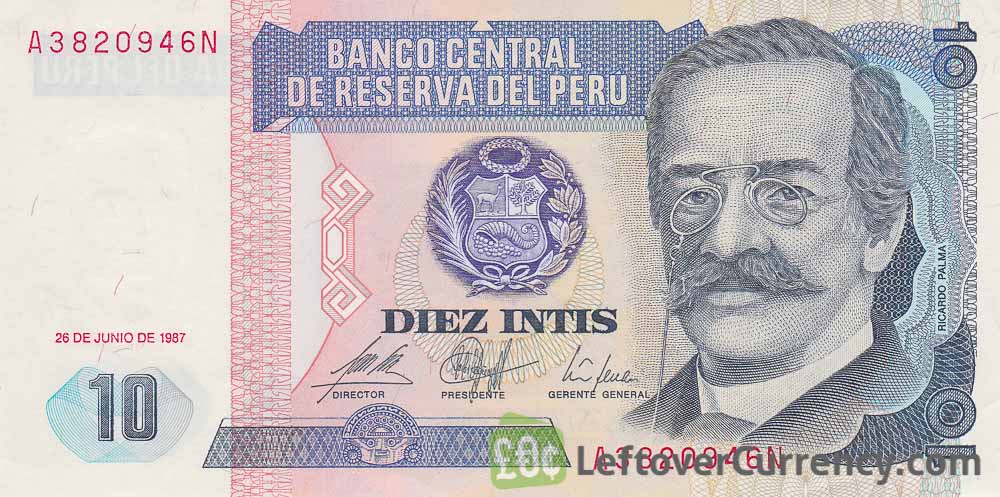
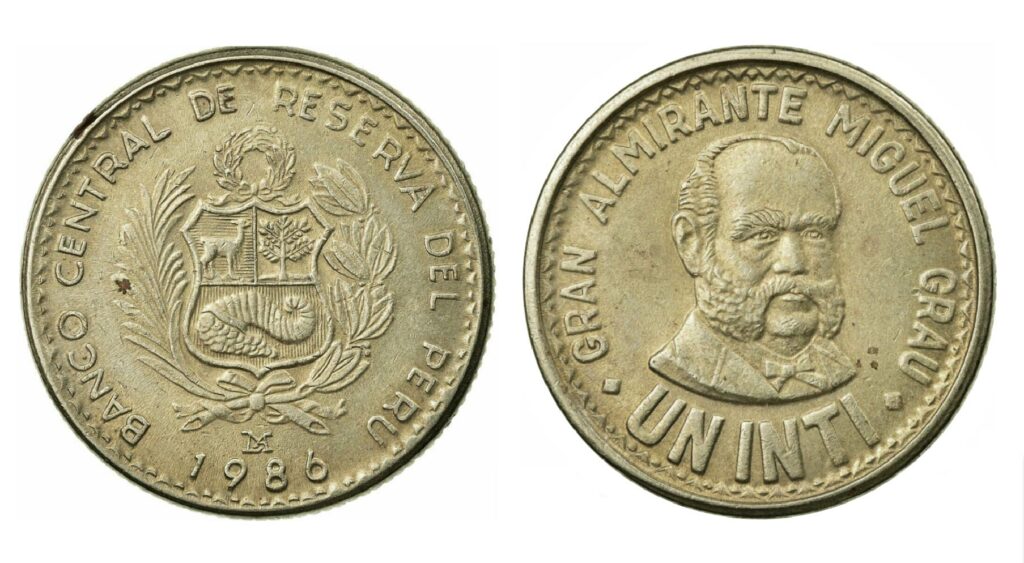
Can I still use Peruvian Intis in Peru today?
No. The national currency of Peru is the Sol. It was introduced in 1991 as the Nuevo Sol, replacing the Inti at a rate of 1 million Intis to 1 nuevo sol. Intis are not accepted as a means of payment in Peru today.What is the value of Peruvian Intis?
The value of Peruvian Inti banknotes was wiped out by hyperinflation in Peru in the 1980’s and early 1990’s. Today, Peruvian Intis have no more monetary value. The only value they have is a collectable value. The highest denomination bill, 5 Million Intis, can be sold for £2.20 on the Leftover Currency site, where you can discover the value of all Peruvian Inti banknotes.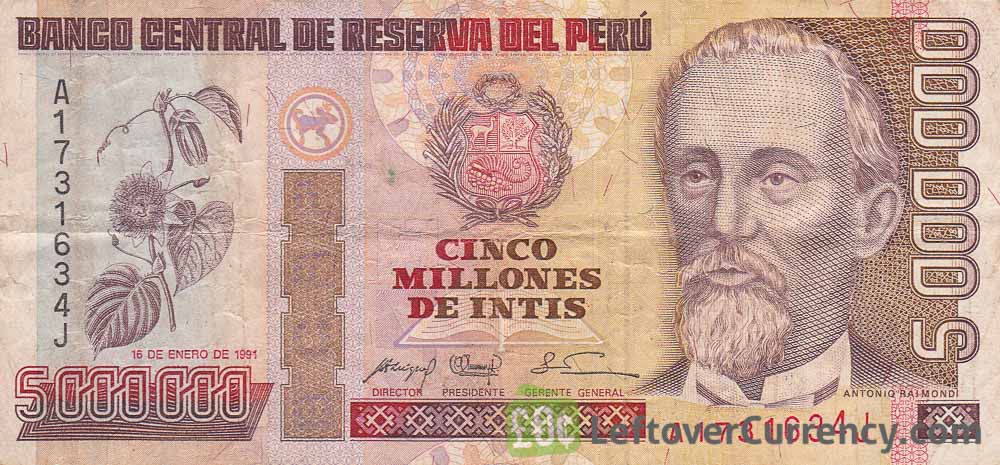 Inflation in Peru was so high that prices in 1990 rose by over 7600%, meaning prices multiplied by factor 76 in 12 months time. This is comparable to prices doubling every 8 weeks. Imagine the price of bread, white loaf, sliced, 800g, rising from £1 in January to a whopping £76 by the end of the year.
Inflation in Peru was so high that prices in 1990 rose by over 7600%, meaning prices multiplied by factor 76 in 12 months time. This is comparable to prices doubling every 8 weeks. Imagine the price of bread, white loaf, sliced, 800g, rising from £1 in January to a whopping £76 by the end of the year.
To cope with the diminishing value of the money, the Banco Central de Reserva del Perú started issuing banknotes in higher denominations: 1000 intis in 1986, followed in 1988 by banknotes of 5000, 10,000 and 50,000, 100,000 and 500,000 intis. At the peak of inflation in 1990, the reserve bank issued notes of 1 Million Intis and 5 Million Intis.
The special case of 100 Intis and 1000 Intis banknotes
There’s something special about the banknotes of 100 Intis and 1000 Intis. For some reason they keep on being found in drawers, cupboards and forgotten envelopes around the world. Often by people who have never been to Peru, nor their relatives.The reason for this is a 1990’s magazine called ‘Money of the World’. The first edition of Money of the World was promoted heavily and sold in supermarkets and newsagents for 99p.
Inside the magazine were free banknotes, real banknotes from countries around the world, for the reader to collect and start their own banknote collection. Magazines like these were popular in the 1990’s and many beginning collectors started their collection with banknotes from Money of the World.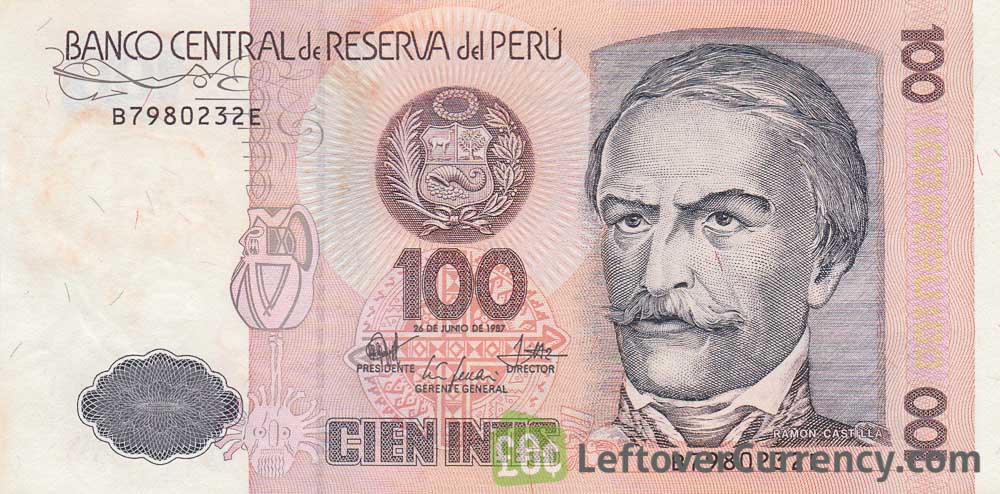
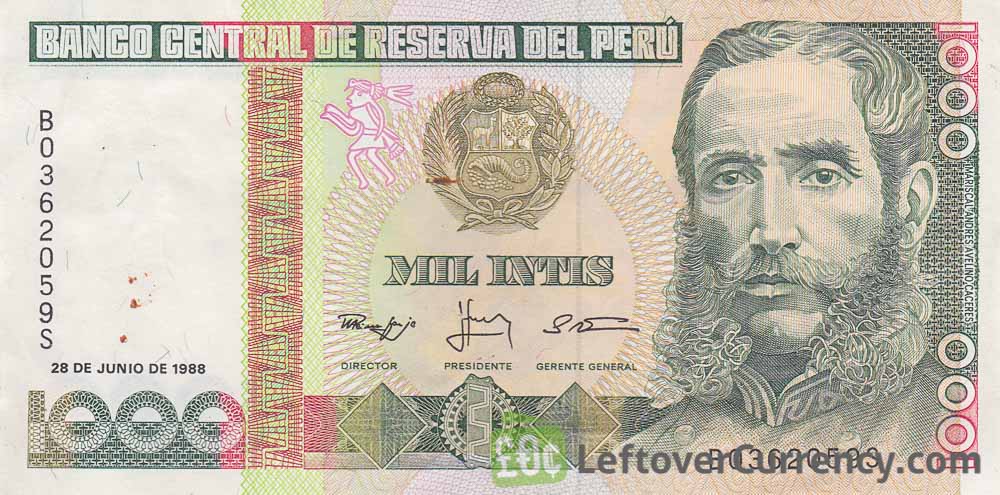 Money of the World needed to find many low-cost banknotes to give away with their magazines. Countries with high inflation were a good start, and this is where Peru comes in. At the time, the 100 cien Intis and the 1000 mil Intis banknotes were both worth less than a hundredth of a penny. So if you are wondering why there’s old Peruvian banknotes in your drawers, there’s the answer. The same is true for the banknotes from Mozambique or Zambia in your drawers.
Money of the World needed to find many low-cost banknotes to give away with their magazines. Countries with high inflation were a good start, and this is where Peru comes in. At the time, the 100 cien Intis and the 1000 mil Intis banknotes were both worth less than a hundredth of a penny. So if you are wondering why there’s old Peruvian banknotes in your drawers, there’s the answer. The same is true for the banknotes from Mozambique or Zambia in your drawers.

 Loading
Loading